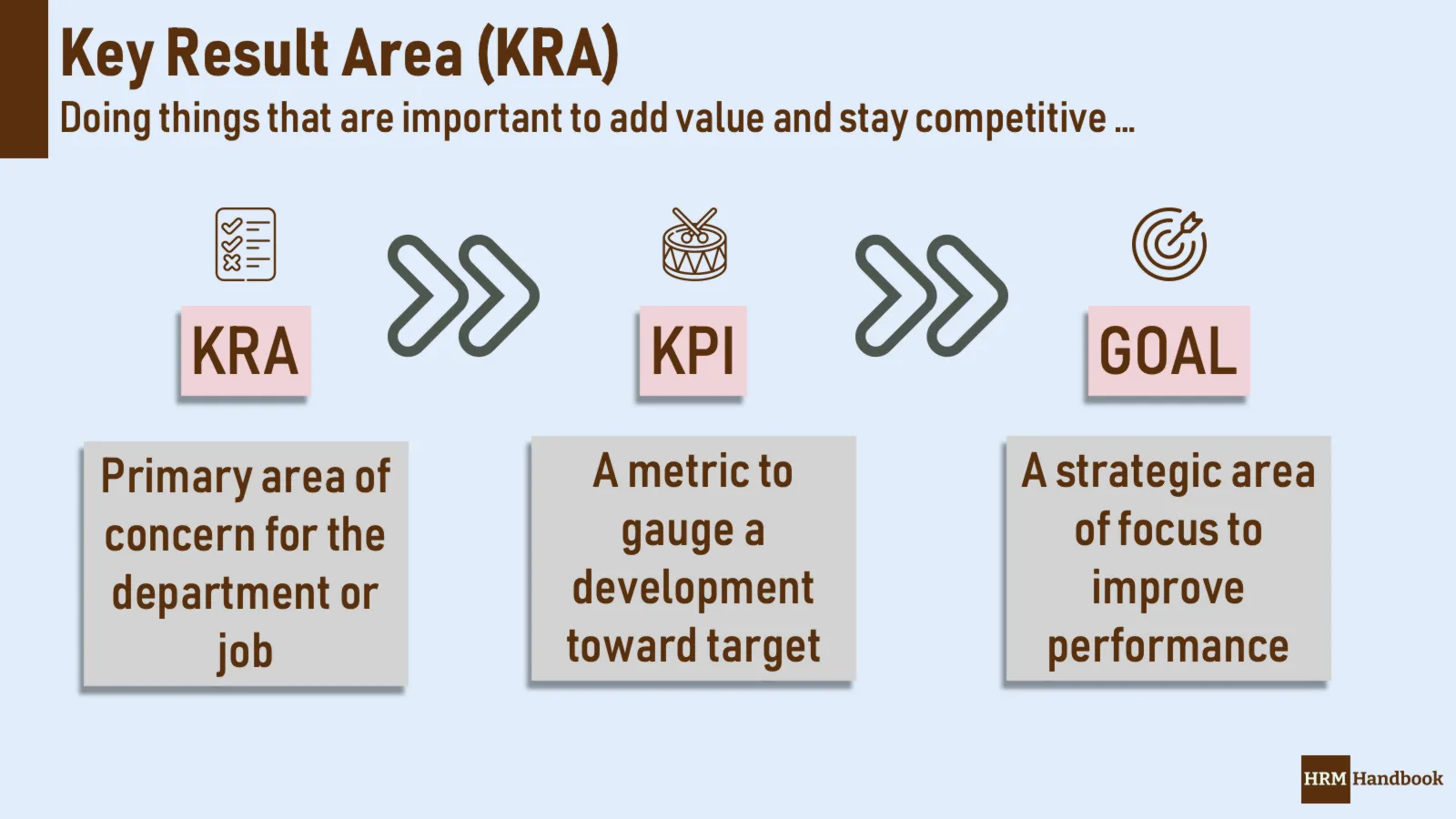Key Result Area - Clear Focus of the Job Role
There is a fundamental difference between key performance indicators and key result areas, which can usually be expressed in monetary terms. While KPIs are targets and usually enter into the variable component of the salary (or are rewarded with a pat on the back and an award), KRAs show how an employee performs in a routine agenda, which is of strategic importance for the company or department, and which is part of their job description. Hence, for achieving and meeting KRAs, he/she is paid a regular basic salary. This is the theory, the practice is much more colourful.
But it is also possible to come from the other side. Although many people like journeys without a destination, working without clear paths and goals is inefficient. It leads to people wasting their time and energy on tasks that don’t yield great results, and then they barely have the resources left for real work.
The only way to deal with this problem is to distinguish what is really important, what is less important and what are unimportant tasks, often called nice-to-haves. This is why companies often invest considerable resources and effort to get a good understanding of what their key result areas are. The translation into English is a bit convoluted, but I could not find a better translation than this one.
From a company-wide perspective, KRAs are the strategic internal or external areas in which a company seeks to realise its added value and outcomes to achieve its development goals. This is because it is generally assumed that if a firm is able to meet its development objectives, it is also successfully fulfilling its strategy and vision. (However, it would take some research to determine how true this hypothesis really is; it always depends on the quality of the company’s management as well.)

Each area involves three to five critical tasks. These are the tasks that will help the company to consolidate its competitiveness and sustainable competitive advantage. These critical tasks that employees, departments, and organizations must focus on are the key result areas. The quantity is important because if a reasonable number of the five areas are exceeded, the magic of focus is lost and the company will eventually achieve nothing but stagnation and decline.
Of course, not every area brings the same benefits and profits to the firm, the ones that are more profitable or more strategic for the firm are the ones that are referred to as key result areas. In these areas, team and individual goals, called KPIs, are then set.
Key result areas must be specific, clear and quantifiable. For example, “ensuring organizational growth” does not belong in the KRA list, but “customer acquisition” does. Being too general will only lead to failure because teams and employees will not be able to envision specific activities that will lead to success.
KRAs include tasks that are necessary to perform the job. And this is extremely important because employees need to be in control of executing strategic activities and the company and management need to be supportive. Giving people sensitive areas in their KRAs that management cannot agree on is a clear example of managerial failure.
KRAs should be influenced by the actions of the people for whom they are outlined. For example, a software engineer cannot have advertising in his KRAs because his work would not affect the company’s popularity.
Importance of key result areas
Defining key result areas is considered crucial to the successful functioning of an organization, increasing the value added of each department and keeping employees motivated and productive. How do they achieve this?
KRAs improve employee focus and increase productivity.
The Pareto Principle states that 20% of effort leads to 80% of results. When this rule is applied, 80% of an organization’s results will result from 20% of activities done correctly. Therefore, marking essential tasks helps employees to focus on them and increases their productivity at reduced time cost.
They are aligned with individual and organisational goals
Often, businesses deviate from their original goals. However, when they have their KRAs written down, it is easier to align their day-to-day activities with their ultimate goals. Further, each employee can align his or her key result areas with the organization’s goals and work to grow the organization at its true essence.
Ensure a systematic division of labor
After knowing the key result areas of a department, its manager can properly distribute work among subordinates. This will ensure productivity within the organization.
Motivate people to perform
The KRAs of a department consist of work that is specific to that department. Likewise, employees know that their organization will suffer if they do not work on their key result areas. This sense of accountability motivates them to stick to the plan and perform better.
They help monitor performance
Once an organization knows the KRAs of its various departments and employees, it can track their progress in these areas. This will further highlight their strengths and underperformance.